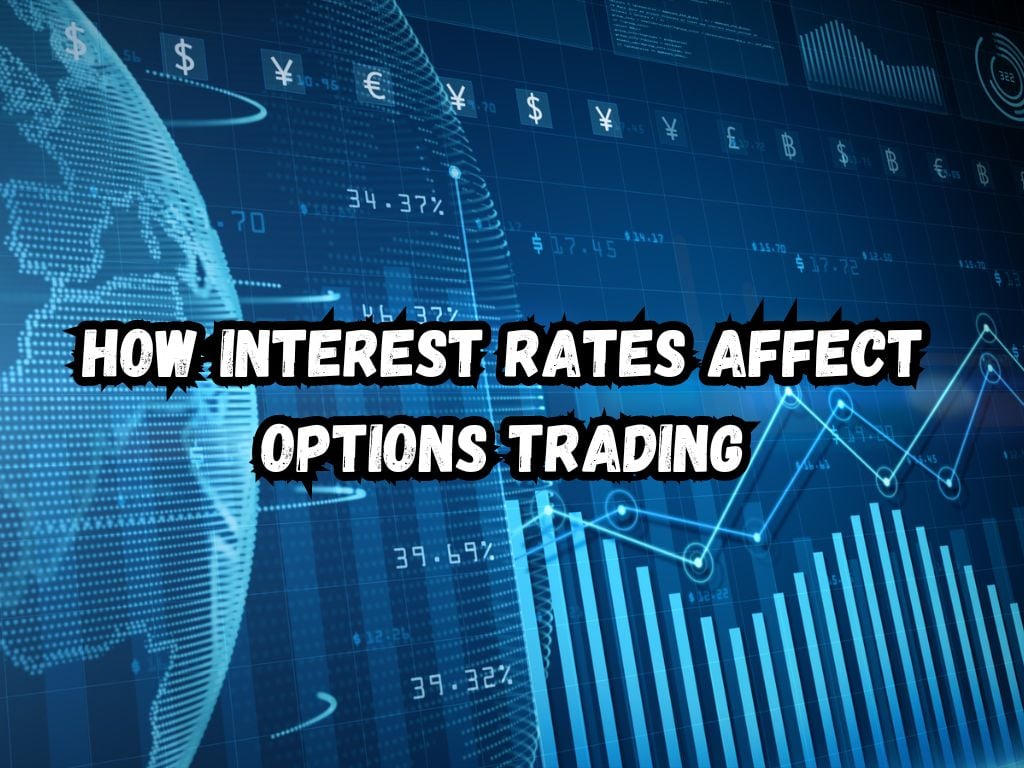Options trading, a significant part of the financial markets, offers traders the flexibility to speculate on or hedge against the future price movements of an asset. While numerous factors influence these markets, interest rates hold a unique position.
This article delves into how interest rates affect options trading, providing a roadmap to navigate this complex terrain.
Understanding Options Trading
At the core of options trading are two primary instruments: call and put options. A call option grants the buyer the right, though not the obligation, to buy an asset at a predetermined price before the option expires. Conversely, a put option allows the buyer to sell an asset under similar conditions.
These options derive their value from underlying assets, such as stocks, bonds, or ETFs, making the impact of market factors like volatility, volume, and especially interest rates, crucial to their valuation.

Interest Rates Explained
Interest rates, essentially the cost of borrowing money, play a pivotal role in the economy. Set by central banks, these rates aim to control economic growth by influencing spending and investment.
The dynamic nature of interest rates, guided by economic indicators and policy decisions, makes understanding their trends essential for investors, especially those in the options market.
The Impact of Interest Rates on Options
The connection between interest rates and options can be understood through two primary theories: the cost of carry model and the Discounted Cash Flows (DCF) theory.
The cost of carry reflects the cost to hold an option, which is directly affected by interest rates. Higher rates increase the cost of carry, impacting options pricing.
Similarly, DCF valuation shows how future cash flows, discounted by the current interest rate, determine an asset’s price. Thus, fluctuations in interest rates can significantly alter the calculated value of an option’s underlying assets.
How Interest Rates Affect Options Trading
Call options typically exhibit a positive relationship with interest rates. As rates rise, the cost of carrying cash or debt increases, making the underlying asset more valuable and boosting the call option’s price. In contrast, put options often move inversely to interest rates.
Higher rates can depress the underlying asset’s value, lowering the price of put options. However, the market’s anticipation and reaction to interest rate changes can vary, making proactive strategy selection and risk management crucial.
Strategic Implications in Options Trading
Understanding how interest rates impact options trading strategies is vital. For instance, an expectation of rising rates might incline traders towards call options on interest-sensitive assets.
Moreover, options offer unique opportunities to hedge against interest rate risk, providing a measure of security against unfavorable market shifts.
The duration of options also plays a role; short-term options may be less sensitive to interest rate changes than their long-term counterparts, affecting strategy choice.
Advanced Concepts
The Greeks – Delta, Theta, and Rho – offer deeper insights into options sensitivity to various factors, including interest rates.
Rho, in particular, measures an option’s responsiveness to interest rate changes, becoming a critical consideration for traders.
Additionally, implied volatility, a prediction of an asset’s future volatility, is influenced by interest rate perceptions, further affecting options pricing and trading strategies.
Case Studies
Historical analysis reveals instances when interest rate changes led to significant market shifts, offering valuable lessons.
Studying these scenarios can provide traders with practical insights into preparing for and responding to similar market conditions.

Pro Tips Box
- Keep an eye on economic indicators and central bank announcements to anticipate interest rate changes.
- Employ diverse options strategies to adapt to different interest rate environments.
- Consider the cost of carry and implied volatility when evaluating options.
- Diversification across asset classes can help manage the risks associated with interest rate fluctuations.
This comprehensive guide underscores the vital influence of interest rates on options trading, equipping traders with the knowledge to navigate these waters effectively.
Understanding the nuanced interplay between rates and options is a fundamental aspect of crafting robust trading strategies in today’s dynamic financial markets.
Frequently Asked Questions
How do rising interest rates affect options trading strategies?
Rising rates often favor call options in interest-sensitive sectors but can adversely affect put options. Strategy adjustments may be necessary to navigate these shifts.
Can option prices predict future interest rate movements?
While not predictors, option prices, influenced by traders’ expectations including those regarding interest rates, can reflect market sentiments.
How can traders use options to speculate on interest rates?
Traders might use interest rate derivatives or target options on assets closely tied to interest rate movements for speculation.
What are some tools to track the impact of interest rate changes on options?
Economic calendars, central bank announcements, and the monitoring of Rho values in options Greeks can be essential tools.
How do professional traders adjust their portfolios in response to interest rate hikes or cuts?
Professionals may rebalance their portfolio, favoring assets favorably impacted by the interest rate shift, or employ hedging strategies to mitigate risk.
Conclusion
Interest rates play a critical role in options trading, influencing strategies, pricing, and risk management.
Understanding this relationship enables traders to make informed decisions, adapting their approaches to maximize gains or minimize losses in response to rate changes.
Staying informed and flexible in strategy selection remains paramount in navigating the complexities of options trading in the context of fluctuating interest rates.


 Tags:
Tags:










